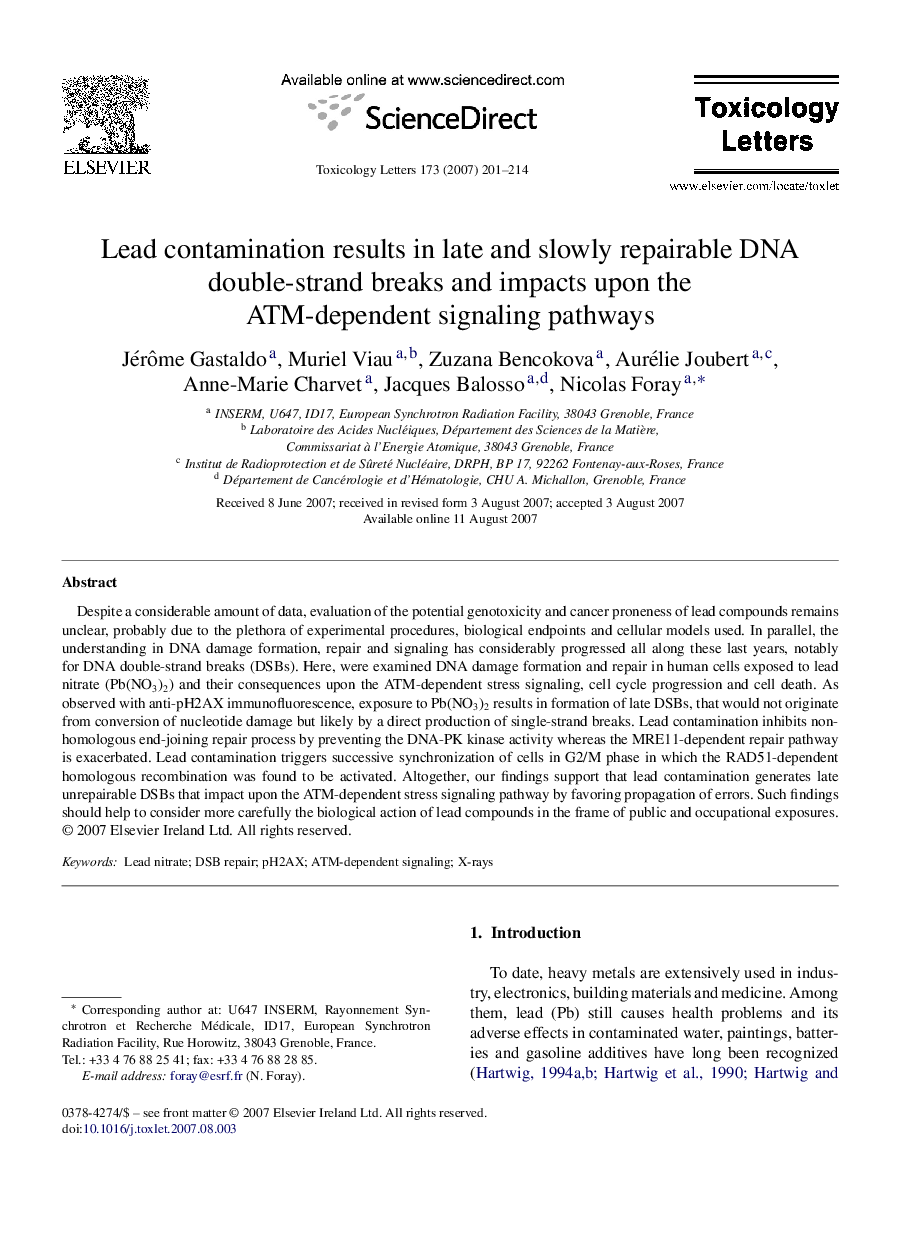| کد مقاله | کد نشریه | سال انتشار | مقاله انگلیسی | نسخه تمام متن |
|---|---|---|---|---|
| 2600636 | 1133277 | 2007 | 14 صفحه PDF | دانلود رایگان |

Despite a considerable amount of data, evaluation of the potential genotoxicity and cancer proneness of lead compounds remains unclear, probably due to the plethora of experimental procedures, biological endpoints and cellular models used. In parallel, the understanding in DNA damage formation, repair and signaling has considerably progressed all along these last years, notably for DNA double-strand breaks (DSBs). Here, were examined DNA damage formation and repair in human cells exposed to lead nitrate (Pb(NO3)2) and their consequences upon the ATM-dependent stress signaling, cell cycle progression and cell death. As observed with anti-pH2AX immunofluorescence, exposure to Pb(NO3)2 results in formation of late DSBs, that would not originate from conversion of nucleotide damage but likely by a direct production of single-strand breaks. Lead contamination inhibits non-homologous end-joining repair process by preventing the DNA-PK kinase activity whereas the MRE11-dependent repair pathway is exacerbated. Lead contamination triggers successive synchronization of cells in G2/M phase in which the RAD51-dependent homologous recombination was found to be activated. Altogether, our findings support that lead contamination generates late unrepairable DSBs that impact upon the ATM-dependent stress signaling pathway by favoring propagation of errors. Such findings should help to consider more carefully the biological action of lead compounds in the frame of public and occupational exposures.
Journal: Toxicology Letters - Volume 173, Issue 3, 28 September 2007, Pages 201–214